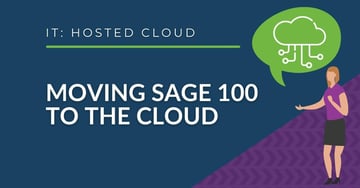- VMware Americas Cloud Partner of the Year
- Positioned in Gartner's Magic Quadrant for DRaaS in 2017, 2018, & 2019
- One of the largest VMware-powered Enterprise Cloud Providers; VMware Cloud Verified
- Ranked as #12 Managed Service Provider in the World by Channel Futures
- 100% SLA on all services; 24x7x365 US-based technical support
- Supports broad portfolio of compliance attestations including HIPAA, PCI DSS & GDPR
We combine our expertise with accounting skills and systems experience, tailoring our services and solutions to satisfy your technology needs.
Contact UsQuick Contact
Have a question? We have answers. Ask us anything.

Turnkey Cloud Infrastructure and Managed IT Services RKL Hosted Cloud
 RKL Hosted Cloud helps companies transform their IT operations through award-winning cloud solutions and managed services including disaster recovery, security, compliance, and more.
RKL Hosted Cloud helps companies transform their IT operations through award-winning cloud solutions and managed services including disaster recovery, security, compliance, and more.
Consuming IT infrastructure and related back-end management tasks as a service has become a ubiquitous business practice because it is cost-effective and enables organizations to focus on strategic projects that drive long-term value.
Transform your business and realize the following business outcomes with a turnkey IaaS solution from RKL eSolutions, powered by RKL Hosted Cloud:
-
Agility: Respond to Change Faster; Drive digital transformation
- Availability: Prevent Unplanned Downtime
- Cost Control: Predict Monthly Expenses; Convert capital-extensive IT costs into a monthly operating expense
- Risk Mitigation: Protect business-critical processes and data; Comply with Industry and Government Mandates
INFRASTRUCTURE AS A SERVICE
-
Cloud
-
Colocation
-
Connectivity
MANAGED SERVICES
-
Backup
-
Cloud Storage
-
Compliance and Security
-
Disaster Recovery as a Service (DRaaS)
-
Network Access
Backups should be capable of restoring anything from a single file to an entire system. They should be used when a server is impacted by ransomware or malware, a single server fails due to a bad software update, a file is deleted from a shared drive, or a table could be dropped from a production database. When deciding on a solution consider these factors:
- Infrastructure Integrations
- Your solution should work with the underlying infrastructure to leverage capabilities which enables performance backups and rapid restoring of entire systems
- Application Compatibility
- Ensure that that backup solution is compatible with existing applications and be aware of special procedures that may be needed to perform
- RPO / RTO
- How long is the outage acceptable (defined by Recovery Time Objective (RTO)) and how much data loss is acceptable (defined by Recover Point Objective (RPO))
Disaster Recovery should be able to handle natural disasters the physically damages the data center (earthquake, hurricane / water leak), a full network outage in the primary data center, or a long-term power outage at the office. When deciding on a DR platform consider these factors:
- Infrastructure Integration
- The solution needs to be natively compatible with the infrastructure protected and environment planned on recovering to
- RPO / RTO
- It is important to look at the expected RTO for the source site/recovery site/DR software combination you plan to use and ensure that the RTO for this combination meets the requirements of your business
- Consistency Requirements
- Additional care must be taken to ensure that data remains consistent across servers because DR solutions are not aware of underlying applications (some incorporate "consistency group" ideals)
- Service Discovery
- The full DR solution should ensure that users are able to reach their applications quickly without direct aid from IT staff
Latest Insights
Read our industry blog posts
Moving Sage 100 to the Cloud
Let Us Help You Migrate to the Cloud Recently Sage began promoting an initiative called Sage Partner Cloud, intending to help Sage 100 users migrate from their on-premises Sage 100 solution to Sage 10...
Outgrowing ERP IT infrastructure
It was the twenty-first century; iPods were taking the world by storm and the journey of Friends was coming to an end. Sage 500 had been the standout ERP solution for manufacturing companies since the...
WEBINAR - Hyperscale or Enterprise – Which Cloud is Best for your Business?
Understanding the cloud marketplace When considering cloud solutions it can be confusing. Should you go with a brand name provider or look beyond to a solution that is purpose built and tailored to ad...





